Nat Hab travelers Lois O. Gray and Kay Gilmour recently journeyed on our Hidden Yellowstone Photo Safari and shared tales of the park’s geysers and hot springs.
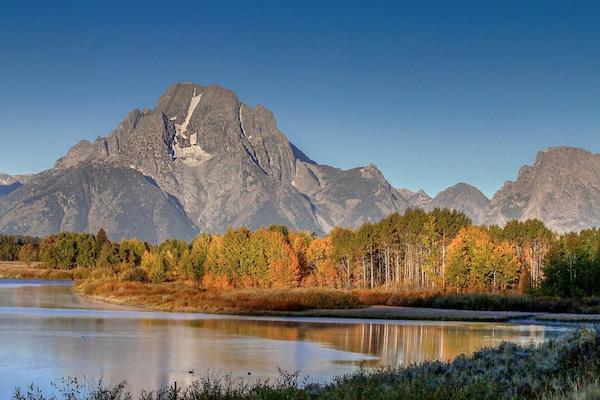
We left early to begin the drive to Yellowstone and stopped at Snake River’s Oxbow Bend. There were wigeons and Canada geese swimming along creating long wake trail patterns on the water.

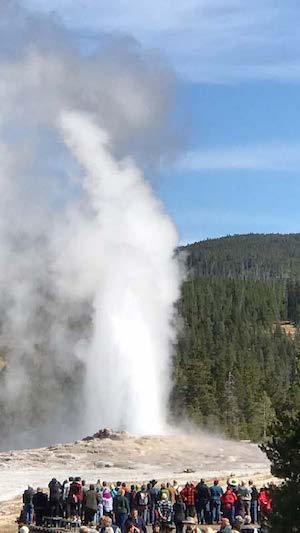
Old Faithful
We drove on through the plentiful trees past the West Thumb of Yellowstone Lake and Lewis Lake. Finally, we reached Upper Geyser Basin where Old Faithful regularly and predictably erupts with steam. Amazingly, we arrived just in time to see a really impressive eruption just as if it had been arranged for us. Our al fresco lunch was served on the upper deck of Old Faithful Inn so we could eat while we watched and photographed the most famous geyser in the world.
Grand Geyser
Talk about timing; just when we had finished all the food, someone noticed that Grand Geyser was beginning to rumble and steam. This geyser is not named incorrectly—it gives a terrific show when it decides to erupt. But, unlike Old Faithful, it is unpredictable. So we were very lucky indeed. We all ran down the stairs, jumped on the boardwalk and sped to the sputtering thermal feature which was quite far from our starting point. It was “going off” great guns when we reached the site and Kay’s pictures attest to the drama.
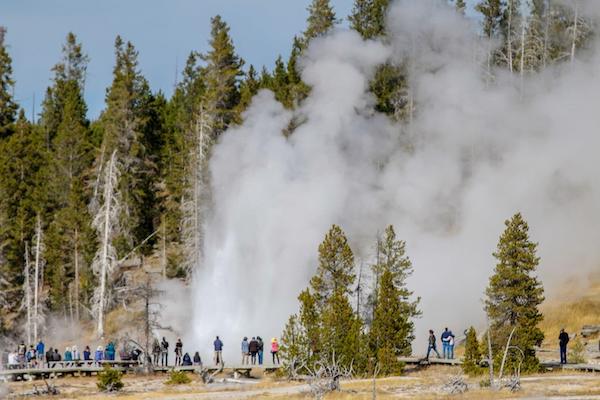
On the way back, we stopped at some of the hot springs and other geysers we had hot-footed it past and enjoyed the colors, as well as Kurt’s clever gadget that could give water temperatures from above the pools. We saw Castle Geyser and Beehive as well as Belgian and Scalloped hot springs. These hot springs, geysers and many other thermal features are located in the Upper Geyser Basin.

Castle Geyser
Grand Prismatic Spring
The next morning found us on our way to Midway Geyser Basin to veiw the vivid and miltiple colors of the Grand Prismatic Spring.


Looking in the shallower edges of this special spring, we saw a wonderful assortment of bugs who can live in that hot water and others that ventured too close to the heat and perished. There was a dead dragonfly floating on the surface and ephydrid flies that were very much alive, carrying on their normal lives. There were tiny living spiders able to survive in the terrible heat. We could identify different algae by the colors their presence produced: red, brown, yellow, and ochre.
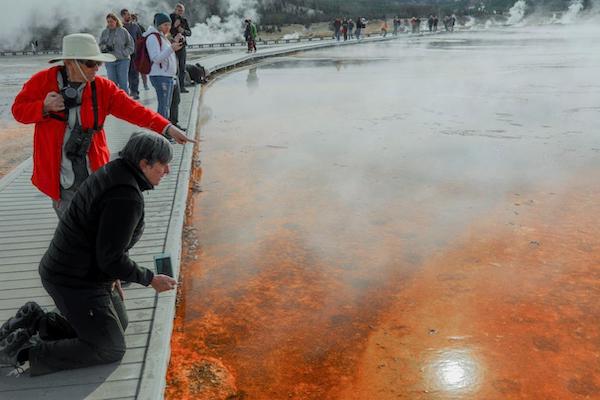

When we left Midway Geyser Basin, we started towards Mammoth Hot Springs to view the travertine terraces. We stopped once at a “jam” caused by folks who had spotted three otters in the river. Everyone flew out of the vans and ran full tilt with all their camera equipment to catch the three otters as they swam and played. They appeared to be a mother and two youngsters and the river was carrying them away rapidly. Kay got excellent photos of them after her fast chase along the river. These creatures are always fun to watch because they are so playful and seem to enjoy life wholeheartedly.
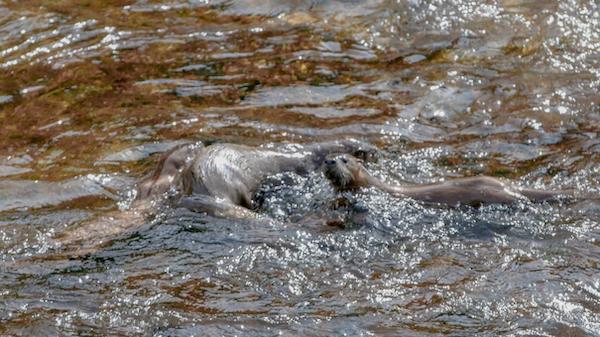
Mammoth Hot Springs
At Mammoth Hot Springs, there was a long up and down boardwalk (almost two miles) to take visitors from the top level of terraces down to the bottom near Liberty Cap (a tall spiral cone left by an extinct geyser). We all explored every boardwalk overlook and took pictures of the terraces. The Mammoth Hot Springs area of Yellowstone is an extensive and complex group of hot springs that have been flowing for thousands of years and pouring out calcium carbonate deposits, which have settled and created stair steps down from their vents. The formations make a cake-like appearance with icicles of travertine (formed of calcium carbonate) hanging over the terraces. The terraces are impressive and demand photographs.
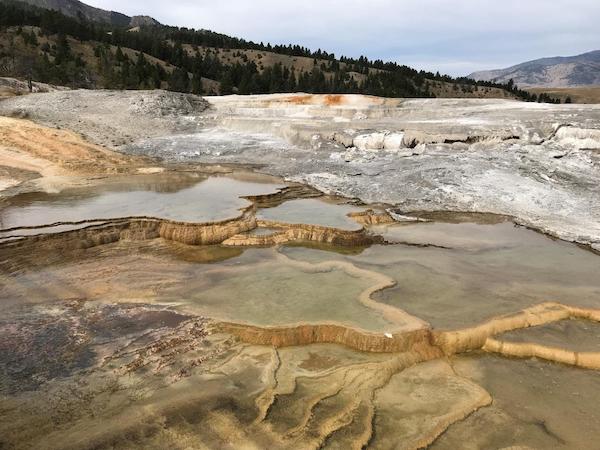
At the conclusion of our boardwalk viewing, we saw a bull elk and two females at the end of the trail near the parking lot. The bull was sitting very calmly with one of the females behind him and one on her feet grazing just a bit away. He looked quite comfortable and every once in a while, he would lift his magnificent head and antlers and bugle for us. We had never before heard elk bugling and were amazed to hear that it is high-pitched rather than the low baritone growly kind of sound we had expected. That was a real highlight of our visit to Mammoth Hot Springs.

We sat outside the Visitors Center while we observed the elk all around us—walking, resting, grazing and tending to elk affairs. These creatures are present much of the year because of the warmth in this volcanic area and the protection of human beings. I think we all enjoyed seeing the elks at ease and up close and personal—no need for long lenses or binoculars.
Keep an eye out for the next stop in Kay’s and Lois’ journey—Lamar Valley—here on the Good Nature Travel blog next Saturday!

























